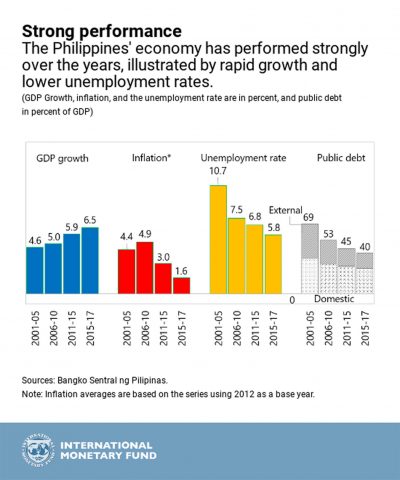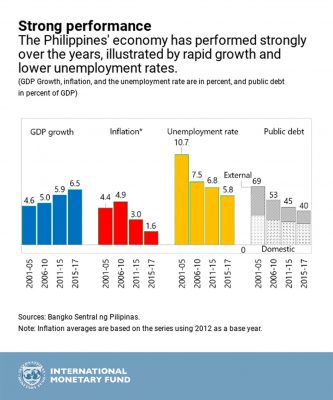NEW YORK, NY – Many of the world’s wealthiest countries became that way by exporting their products to other countries. In later years they added services to increase their export revenues and earnings. Many inherent and developed factors of a country’s demographics lead to wealth creation including ample land, other earth resources, a large population with lower cost of labor, and an educated, innovative work force with valuable human qualities such as goal-setting and hard work.
Two of the best examples of wealth-building through exports are Japan and China. Japan’s economy began growing after World War II. Today, Japan is the world’s third largest economy with nearly $5,000 billion of output where the average person earns nearly $40,000.
China is the world’s second largest economy with a gross domestic product or GDP of $12,238 billion, and has the world’s largest net export surplus of $495 billion, or four percent of its economy. Nos. 2 to 5 in the size of their export surpluses are Germany, South Korea, Ireland, and the Netherlands.
But Ireland really stands out among these five countries because its export surplus of $114 billion is a whopping 37 percent of its $334 billion economy, which is just slightly larger than the Philippines’ $314 billion GDP. The Philippines has much to learn from Ireland, and its political and economic leaders would do well to establish close ties with it for mutual benefit.
The Philippines has a lot of natural and human resources to increase its revenues then invest that money to make more money, and thereby raise the average standard of living and enhance the enjoyment of life. A lot can be done to plan and incentivize exports, such as China does, but that would take much space to write. The how-to’s could be the subject of a later column, utilizing my knowledge and experience gained in 20 years of my (previous) export business.
In a US Central Intelligence Agency list of 222 countries and territories, 68 of them are net exporters, meaning they export more than they import. This accomplished group of nations that receive more money than they send out overseas are just over 30 percent of the 222 nations. Is the Philippines part of this group? No, but it can become one of them. Here’s why we believe it can:
Here are just some of the positive demographics of the Philippines that can boost export earnings:
- Ample, arable land
- Diverse and numerous natural resources
- A large educated work force
- High English proficiency among the population
- Capable, courteous, friendly customer representatives
The Philippines, being one of net importers group of 154 countries is in the diverse and mixed company of such wealthier as well as poorer Asian and Pacific neighbors as Australia, Bangladesh, Cambodia, Guam, Hong Kong, India, Laos, Macau, Myanmar, New Zealand, North Korea, and Sri Lanka. Many more in other continents and world regions are net importers, or have export deficits, including the largest economy, the United States.
We believe what really matters in economic growth, regardless of the size of a country’s GDP, is that the percentage of a country’s export deficit relative to its economy be not too large, otherwise a large percentage of a country’s earnings end up being spent to buy goods and services from overseas. For example, the US export deficit of $752 billion is just 3.88 percent of its $19.400 billion economy. Half of that deficit is with China alone that President Trump wants to eliminate.
Comparatively, the Philippines’ export deficit of $34 billion is 11 percent of its $314 billion economy. A rich neighbor with a very similar-sized economy is Singapore, with a GDP of just $10 billion more or $324 billion. But with far fewer people in that city-state, the average Singaporean earns $57,700, or almost 20 times more than a Filipino’s $2,975 annual income.
Singapore has a huge net exports surplus of $83 billion, or a large 28 percent of its $324 billion economy. Its fifth- highest exports-to-GDP ratio is topped only by $334 billion-GDP Ireland with a 37 percent surplus, and three very small economies – the Falklands, San Marino, and Papua New Guinea.
Singapore is far ahead of the Philippines in selling its products and services to overseas markets, after adequately satisfying the needs of domestic consumption by its much smaller but richer population of 5.8 million high-income consumers. Many of its products are high-value tech items.
The Philippines and its people in business, education, government, trade and other sectors can learn much about down-to-earth and practical ways to bring about economic growth through exports, from Singapore’s business-savvy community of export entrepreneurs and government leaders.
Besides China that has the world’s largest export surplus, we can learn much from Asian countries and territories that have exports-to-GDP surplus ratios such as Brunei, Hong Kong, Indonesia, Japan, Malaysia, Russia, South Korea, Taiwan, Thailand, and Vietnam. The Philippines has a bright economic future with much potential for growth!
Kumar (Kem) Balani has an AB Journalism degree from the University of the Philippines and an MA in Politics from New York University. He is founder and publisher of Biz India Online News since 2002. Go to www.BizIndia.net to read book reviews, features, news, opinion columns, and videos on business,entertainment, investing, law, sports, technology, and more.
This column first appeared in the Daily Tribune in the Philippines on Sunday, December 30, 2018. Read Kumar Balani’s columns in that newspaper: http://tribune.net.ph/index.php/author/kumar-balani/








